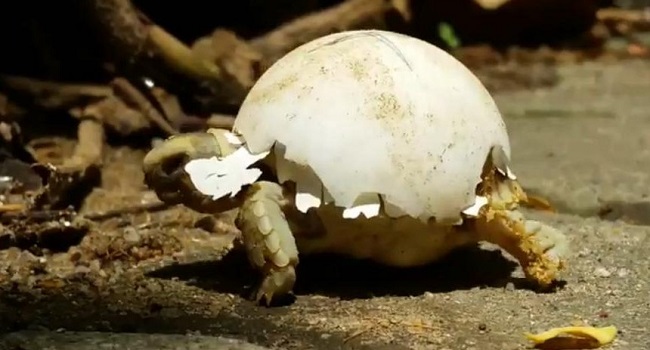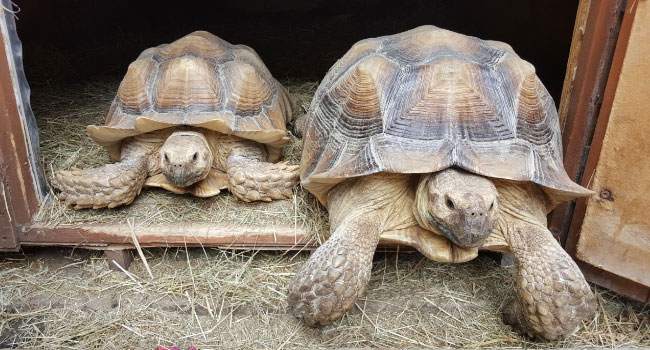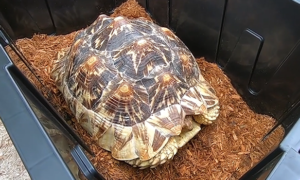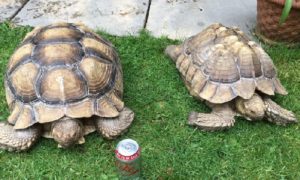It can be quite enticing to breed your pet sulcata tortoise. But keep in mind that the sulcata tortoise mating process can be quite aggressive and stressful, and you’ll end the season with hundreds of babies that will need homes. If you decide to breed your pet sulcata tortoises, understand the basics before you get started breeding.
Male or Female Sulcata
Around 5-15 years old, it becomes very apparent whether a sulcata tortoise is male or female. Often you can tell sooner, but by 5-15 years old, you should be sure what gender your tortoise is.
Male sulcata tortoises are larger, have a concave plastron (belly), longer tail and a curved carapace. It’s common for male sulcata tortoises to flash their goods, where you can see them.
Female sulcata tortoises are slightly smaller, have a flatter plastron, shorter tail and a rounder carapace.
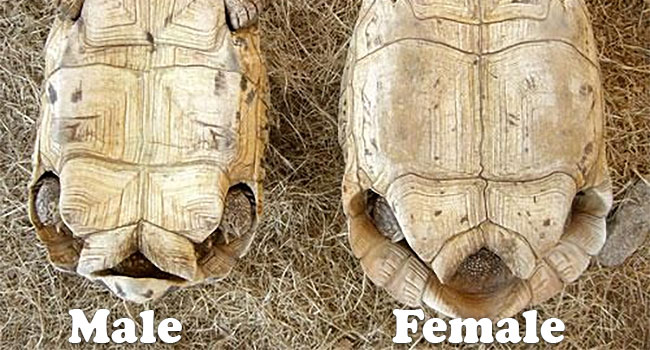
Sulcata Tortoise Mating Season
Although there is no set mating season for sulcata tortoises, mating season for sulcata tortoises is typically triggered by the weather. Males will often start courting his female during the rainy season, so that when the weather warms, the female can begin her nest. When the temperatures begin to warm and the days become longer, males will begin courting female tortoises.
Mating Behaviors
When a male chooses a female, you may notice several mating behaviors. The male sulcata will begin to follow the female sulcata closely. He will try to nuzzle her neck, and he will gently bite and nudge her. The male tortoise is expressing interest and showing dominance. The male tortoise may circle the female and head bob.
You may hear hissing sounds as the male is communicating with the female tortoise, attempting to establish interest.
Once the female accepts the male, he will mount her.
Pregnant Female Sulcata Tortoise
Female sulcata tortoises can store sperm until the environmental conditions are optimal for nesting. Typically, she will gestate for 60 days before beginning her nest. When she is ready, the female tortoise will look for the ideal place to lay her eggs. Typically the nest is made in sandy, well-drained soil.
The female will dig a deep hole for the eggs. She will lay about 15-30 eggs before covering the nest so that it remains concealed and protected.
Hatching Sulcata Eggs
Once laid, the tortoise eggs will incubate for about 90-120 days. You can leave the eggs to hatch naturally, although most will dig them up and incubate the eggs in a climate-controlled incubator.
